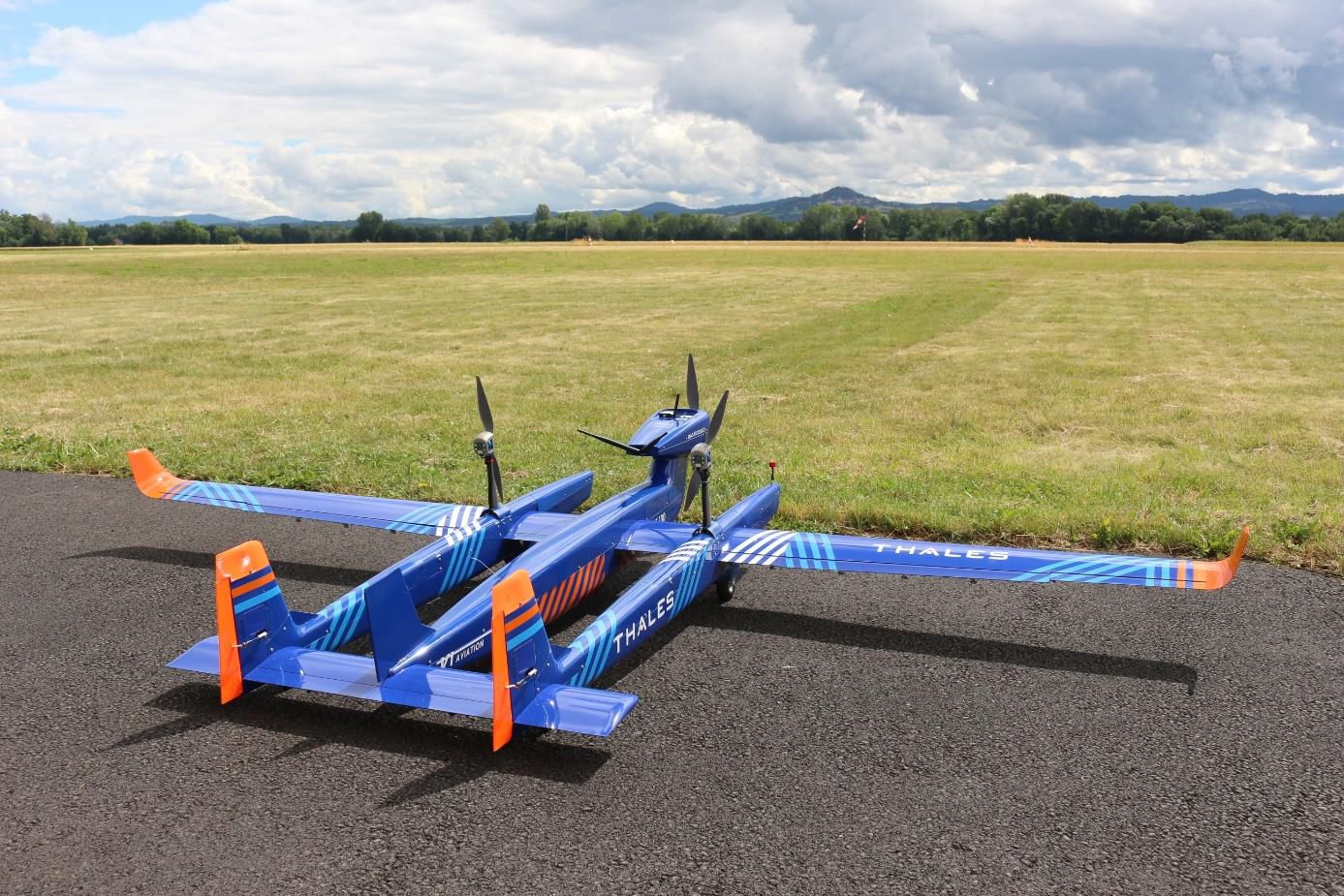France-based aerospace company Thales has successfully flown a half-scale prototype of its UAS 100 long-range unmanned aircraft system (UAS/drone). The final version of the hybrid-electric UAS 100 is expected to have a range of greater than 100 kilometers (54 NM), be capable of carrying a 10-kilogram (22-pound) payload and feature a “jam-resistant” navigation system. It was designed to meet the requirements of the new European Special Condition – Light Unmanned Aircraft Systems (SC-LUAS) regulations.
“With this new long-range UAS, Thales is providing the trusted solution needed for civil, government and military inspection and security applications,” said Yannick Assouad, Thales executive vice president for avionics. “As well as meeting today’s operational requirements, the new system paves the way for the air mobility solutions of tomorrow.”
The UAS 100, which Thales hopes to have certified in 2023, is geared toward missions including infrastructure inspection, coastal surveillance, border surveillance, event security, search-and-rescue and military operations. It was developed in partnership with aircraft manufacturer Issoire Aviation and drone autopilot solutions company Hionos. UAS 100 development has also been supported by the French Ministry of the Armed Forces Defence Innovation Agency (DIA).




































Sadly, it will succeed. All of those applications mentioned will doom manned flight in those areas. It will in fact “pave the way for mobility solutions of tomorrow”; a tomorrow with even less airports, less need pilots, less need for traditional flying as a whole. The future is rather bleak for pilots.
Guess you are right Art, but appears this is inevitable.
” …this new long-range UAS…is expected to have a range of greater than 100 kilometers (54 NM)”
Too funny!
A long way to go before the elimination of pilots. 54NM range is not pilot threatening. Neither is the 22LB payload.
Urban mobility solutions will take decades to mature and safely integrated ( if ever) into the present ATC system no matter the global location. There is little to no suitable, sustainable, necessarily expandable infrastructure to support the numbers of autonomous aerial conveyances required to carry freight and passengers the current avgas/kerosene burners fleet provide. The aviation consumer, whether it be the average flying public, freight companies, FedEx/USPS etc, will measure their expectations compared to current fossil fuel capabilities. Until an electrical powered/ hybrid/so-called sustainable powered aerial replacement is a s good as a commonly used Caravan to 747, including successful, safe, proven, demonstrated autonomous guided capability combined with FAA/EASA/JAA and any other global, government aviation agency approval and integration with the existing fleet, their will be a need for pilots.
Boeing Airbus, and Embraer will be building their airplanes requiring pilots for a very long time before they can be phased out for so-called zero emissions aerial conveyances. If anything, global bureaucracy guided by global politicians ( who are as aviation ignorant as the general public) will be the insurance that fossil fuel aircraft flown by homosapiens will go on for decades. Embry-Riddle, Spartan, Flight Safety International, ATP, and flight schools in general are in no threat of closing their doors for the foreseeable future. Simple bureaucracy, fueled by greed with political aspirations to stay in power and the grid-lock it causes will be the primary, long-term sustainable force that will guarantee the fossil fuel reliability, safety record, and availability will be around for a long time.